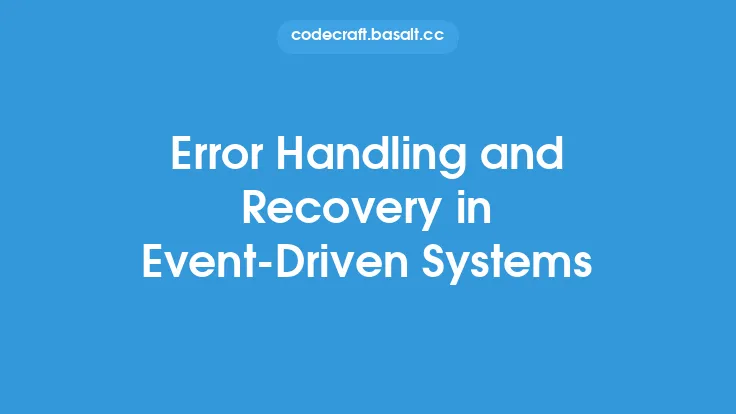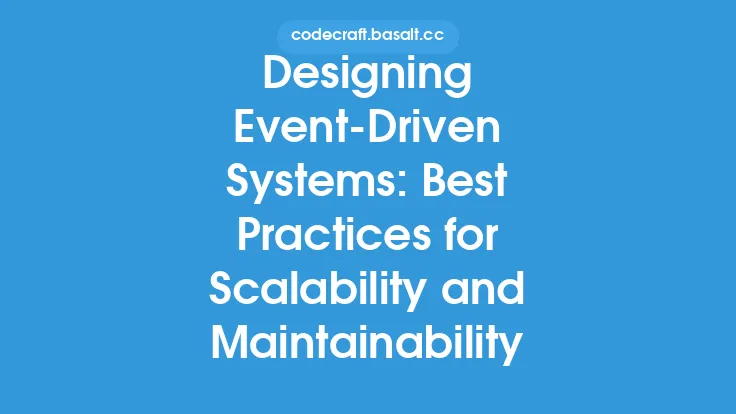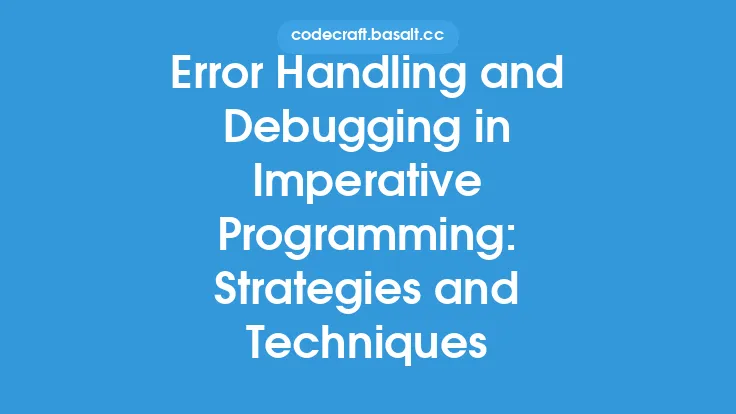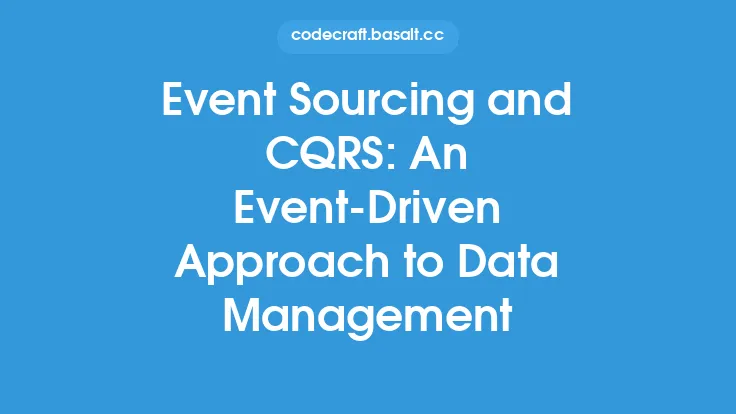Event-driven systems are designed to handle and respond to events or messages, making them highly responsive and scalable. However, the complexity of these systems can lead to errors and failures, which can have significant consequences if not handled properly. Error handling is a critical aspect of event-driven systems, as it ensures that the system remains robust and reliable even in the face of failures. In this article, we will explore the strategies for error handling in event-driven systems, and discuss the best practices for implementing robust and reliable error handling mechanisms.
Introduction to Error Handling in Event-Driven Systems
Error handling in event-driven systems involves detecting, reporting, and recovering from errors that occur during the processing of events. Errors can occur due to various reasons, such as network failures, database errors, or invalid data. The goal of error handling is to prevent the system from crashing or becoming unresponsive, and to ensure that the system can recover from errors and continue processing events. There are several challenges in error handling in event-driven systems, including the asynchronous nature of event processing, the complexity of event flows, and the need to handle errors in a way that minimizes the impact on the system.
Types of Errors in Event-Driven Systems
There are several types of errors that can occur in event-driven systems, including:
- Network errors: These occur when there are problems with the network, such as connectivity issues or packet loss.
- Database errors: These occur when there are problems with the database, such as connection issues or query errors.
- Invalid data errors: These occur when the data being processed is invalid or corrupted.
- Business logic errors: These occur when there are problems with the business logic of the system, such as incorrect calculations or invalid state transitions.
- System errors: These occur when there are problems with the underlying system, such as out-of-memory errors or thread pool exhaustion.
Error Handling Strategies
There are several error handling strategies that can be used in event-driven systems, including:
- Retry mechanisms: These involve retrying the failed operation a certain number of times before giving up.
- Fallback mechanisms: These involve using a fallback or default value when an error occurs.
- Error queues: These involve storing errors in a queue for later processing or analysis.
- Dead letter queues: These involve storing messages that cannot be processed in a separate queue for later analysis or debugging.
- Circuit breakers: These involve detecting when a service is not responding and preventing further requests from being sent to it.
Implementing Error Handling Mechanisms
Implementing error handling mechanisms in event-driven systems requires careful consideration of the system's architecture and design. Some best practices for implementing error handling mechanisms include:
- Using a centralized error handling mechanism: This involves using a single error handling mechanism that can handle errors from all parts of the system.
- Using a standardized error format: This involves using a standardized format for errors, such as a JSON object or an XML document.
- Logging errors: This involves logging errors for later analysis or debugging.
- Monitoring error rates: This involves monitoring the rate of errors and taking action when the rate exceeds a certain threshold.
- Testing error handling mechanisms: This involves testing error handling mechanisms to ensure that they are working correctly.
Error Handling in Distributed Event-Driven Systems
Error handling in distributed event-driven systems is particularly challenging due to the complexity of the system and the need to handle errors in a way that minimizes the impact on the system. Some strategies for error handling in distributed event-driven systems include:
- Using a distributed transaction protocol: This involves using a protocol that can handle transactions across multiple nodes in the system.
- Using a message queue: This involves using a message queue to store messages that cannot be processed and retrying them later.
- Using a service discovery mechanism: This involves using a service discovery mechanism to detect when a service is not responding and redirecting requests to a different node.
Best Practices for Error Handling in Event-Driven Systems
Some best practices for error handling in event-driven systems include:
- Handling errors as close to the source as possible: This involves handling errors as close to the source as possible to minimize the impact on the system.
- Using a standardized error handling mechanism: This involves using a standardized error handling mechanism to handle errors in a consistent way.
- Logging errors: This involves logging errors for later analysis or debugging.
- Monitoring error rates: This involves monitoring the rate of errors and taking action when the rate exceeds a certain threshold.
- Testing error handling mechanisms: This involves testing error handling mechanisms to ensure that they are working correctly.
Conclusion
Error handling is a critical aspect of event-driven systems, as it ensures that the system remains robust and reliable even in the face of failures. By using the strategies and best practices outlined in this article, developers can implement effective error handling mechanisms that minimize the impact of errors on the system and ensure that the system can recover from errors and continue processing events.





